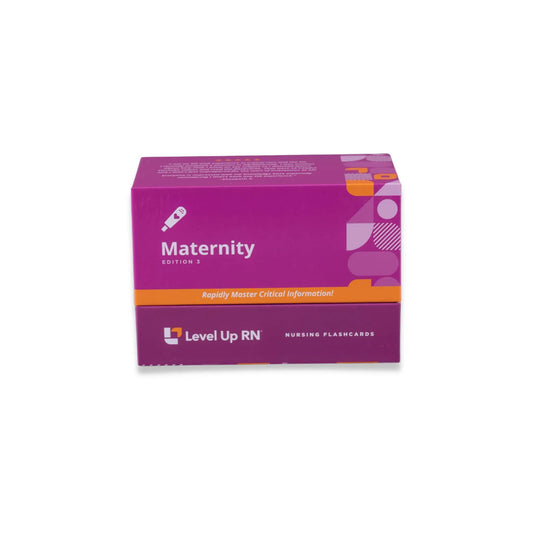Welcome to the Maternity Nursing series! This series follows along with our Maternity Nursing Flashcards which are intended to help RN and PN nursing students study for nursing school exams, including the ATI, HESI, and NCLEX.
In this article, we begin our coverage of contraception, starting with behavioral and barrier methods.
Contraception
Contraception is birth control; preventing pregnancy as a result of sexual intercourse by preventing a sperm from reaching an egg to become fertilized and implanted in the uterine wall.
The term conception commonly refers to the process of becoming pregnant, where a sperm meets an egg, producing a zygote (fertilized egg) and implants into the uterine wall, to grow. Contraception is the prevention of that process. Contra- means against, and -ception is just a shortened form of conception.
Want to learn more word parts? We created our Medical Terminology flashcards to make breaking down words into their parts easy, so you never have to be confused by an unfamiliar word on an exam!
Different forms of contraception prevent conception at many points along the timeline. Contraception may:
- prevent semen from entering the body (abstinence, withdrawal, condoms),
- remove sperm from semen (vasectomy),
- reduce or remove sperm's ability to "swim" to the egg (spermicide, IUDs),
- physically block the sperm from the egg inside the body (diaphragm),
- prevent eggs from being available to fertilize (natural family planning, oral contraceptives, hormonal IUDs, tubal ligation),
- or prevent a fertilized egg from implanting (oral contraceptives, IUDs).
Behavioral methods of contraception
Behavioral methods of contraception are ways that one can alter their behavior around the timing or presence of sexual intercourse, in an attempt to prevent pregnancy. There are several behavioral methods of contraception to be aware of: abstinence, withdrawal, and natural family planning.
Maternity Nursing - Flashcards
Abstinence
Abstinence means the complete avoidance of sexual intercourse. Not having sexual intercourse is the only 100% effective way to prevent pregnancy.
Withdrawal
Withdrawal is the removal of the penis from the vagina before ejaculation occurs during sexual intercourse. Withdrawal is not a very effective method of preventing pregnancy, which is something that you would want to counsel your patients on.
Natural family planning
Natural family planning is a method of monitoring the menstrual cycle, basal body temperature, or cervical mucus consistency and attempting to estimate which days someone is most fertile, to avoid sexual intercourse on those days.
Natural family planning requires work, planning, tracking, and is not always reliable. Therefore, it is not an especially effective method for preventing pregnancy.
Behavioral methods of contraception and STIs
Abstinence is the only behavioral contraception method that protects against sexually-transmitted infections (STIs). Withdrawal and natural family planning do not protect against STIs
Barrier methods of contraception
Barrier methods of contraception place a physical barrier between the uterus and sperm.
Diaphragm
A diaphragm (in the context of birth control, not the respiratory system) is a flexible silicone dome placed over the cervix that is used with spermicide to kill the sperm and prevent it from getting past the diaphragm. Spermicide must be reapplied around the rim of the diaphragm prior to each act of intercourse.
A diaphragm can be inserted up to 6 hours prior to sexual intercourse, and must be left in for at least 6 hours after, but no more than 24 hours total.
A diaphragm must be fitted by a provider, and is not available over the counter. Patients must be refitted every two years, with a weight change of more than 10lbs, after pregnancy, or abdominopelvic surgery.
Diaphragms have fallen in popularity since the hormonal birth control pill came on the market in the 1960s.
Condoms
Condoms are made of latex or polyurethane.
Male condoms are placed over the penis. Proper application of the male condom requires pinching the tip of the condom during application to leave a reservoir for semen.
Did you know there are female condoms? These condoms are also called internal condoms, and were actually renamed internal condoms by the FDA in 2018.
An internal condom looks like a plastic tube with rings on either end, and is inserted into the vagina. The interior ring of the internal condom sits around the cervix and the exterior ring is outside the vagina. Sales of internal condoms are much lower than sales of male condoms in the United States.
Male condoms and internal condoms cannot be used at the same time due to risk of tearing.
Condoms are the only method that offers protection against STIs during sexual intercourse.



1 comment
I was very excited to this site because it provide ditail information thats why l’m interested in to join👍👍👍👍thankyou
So much